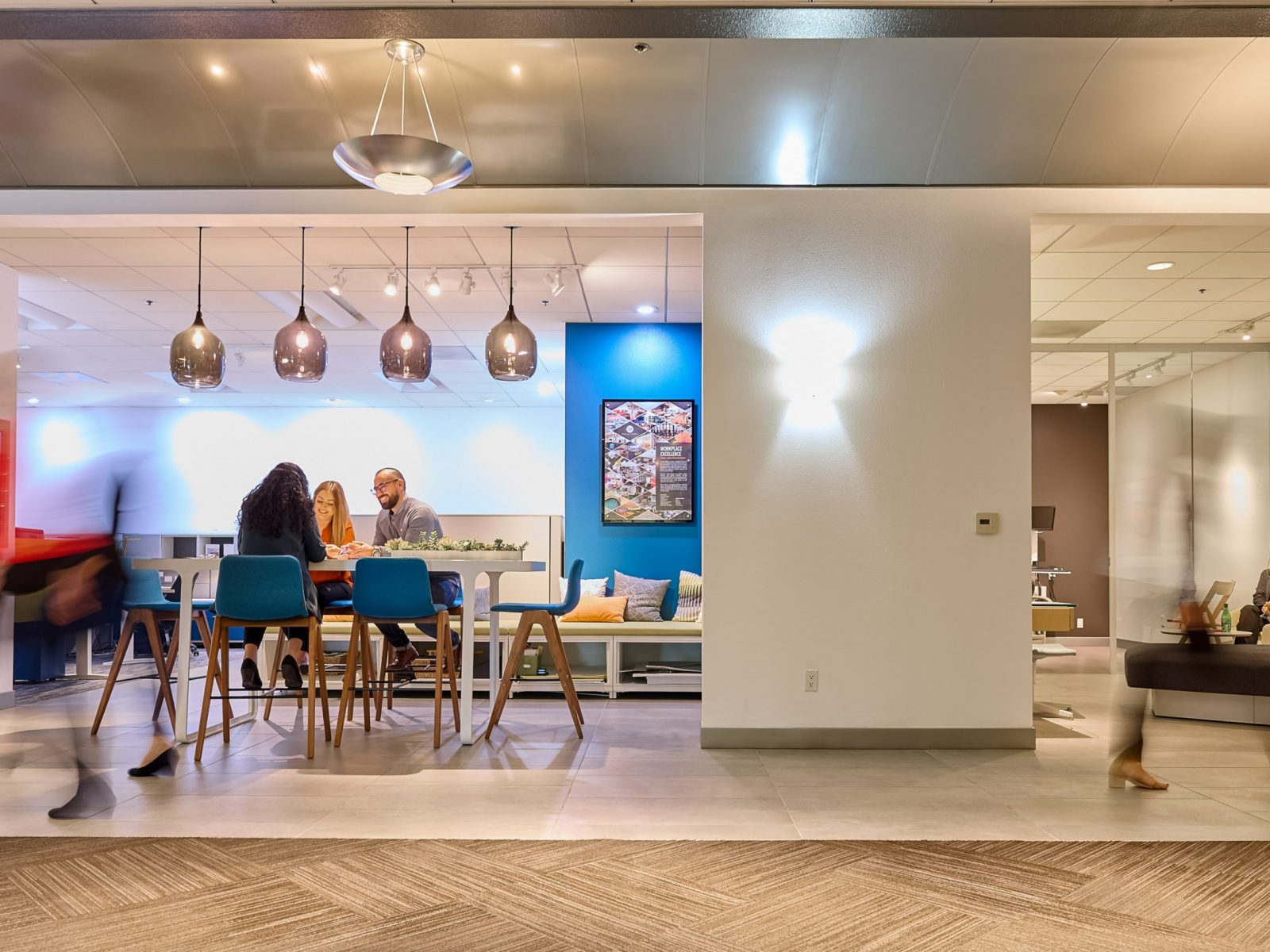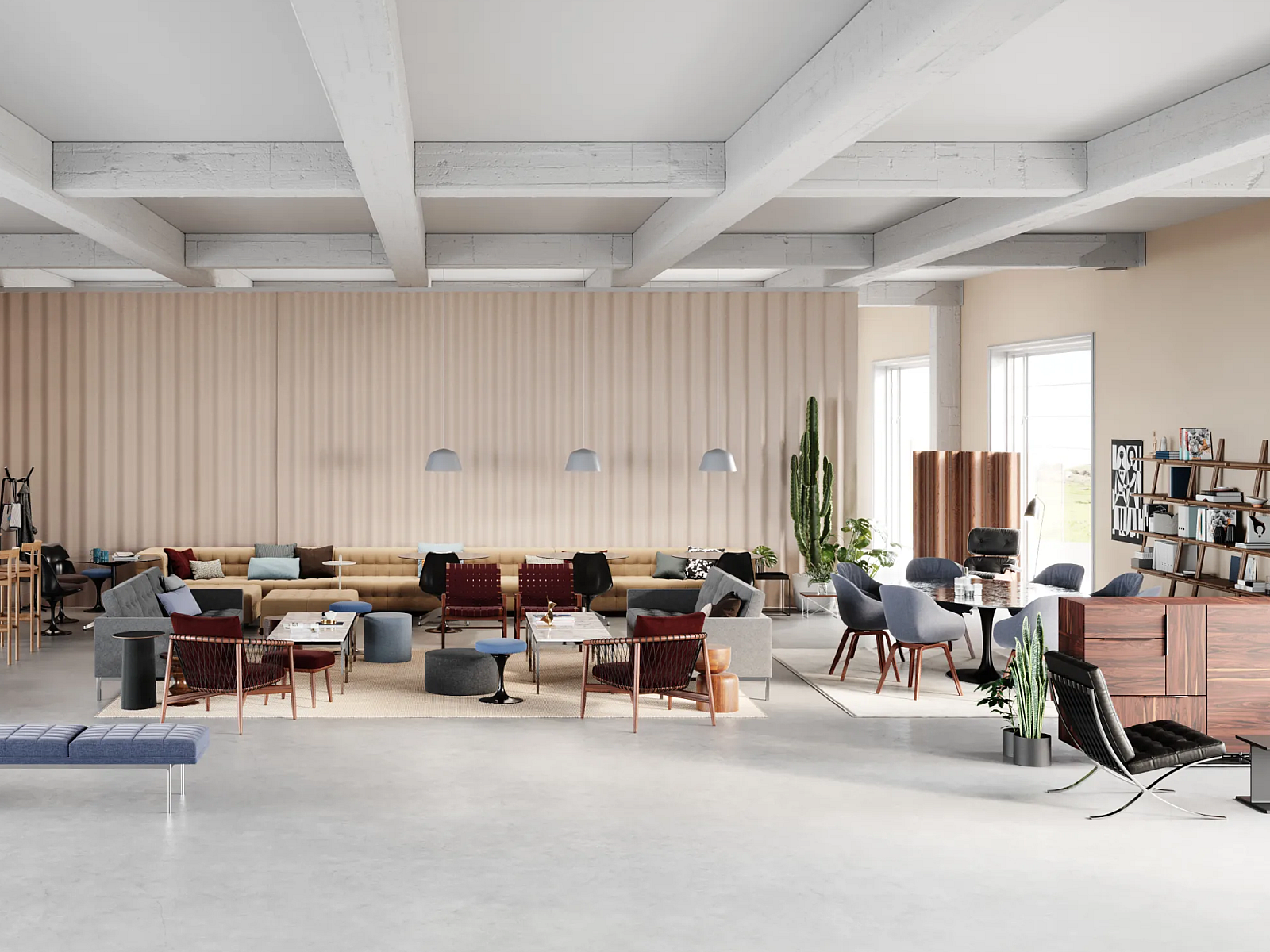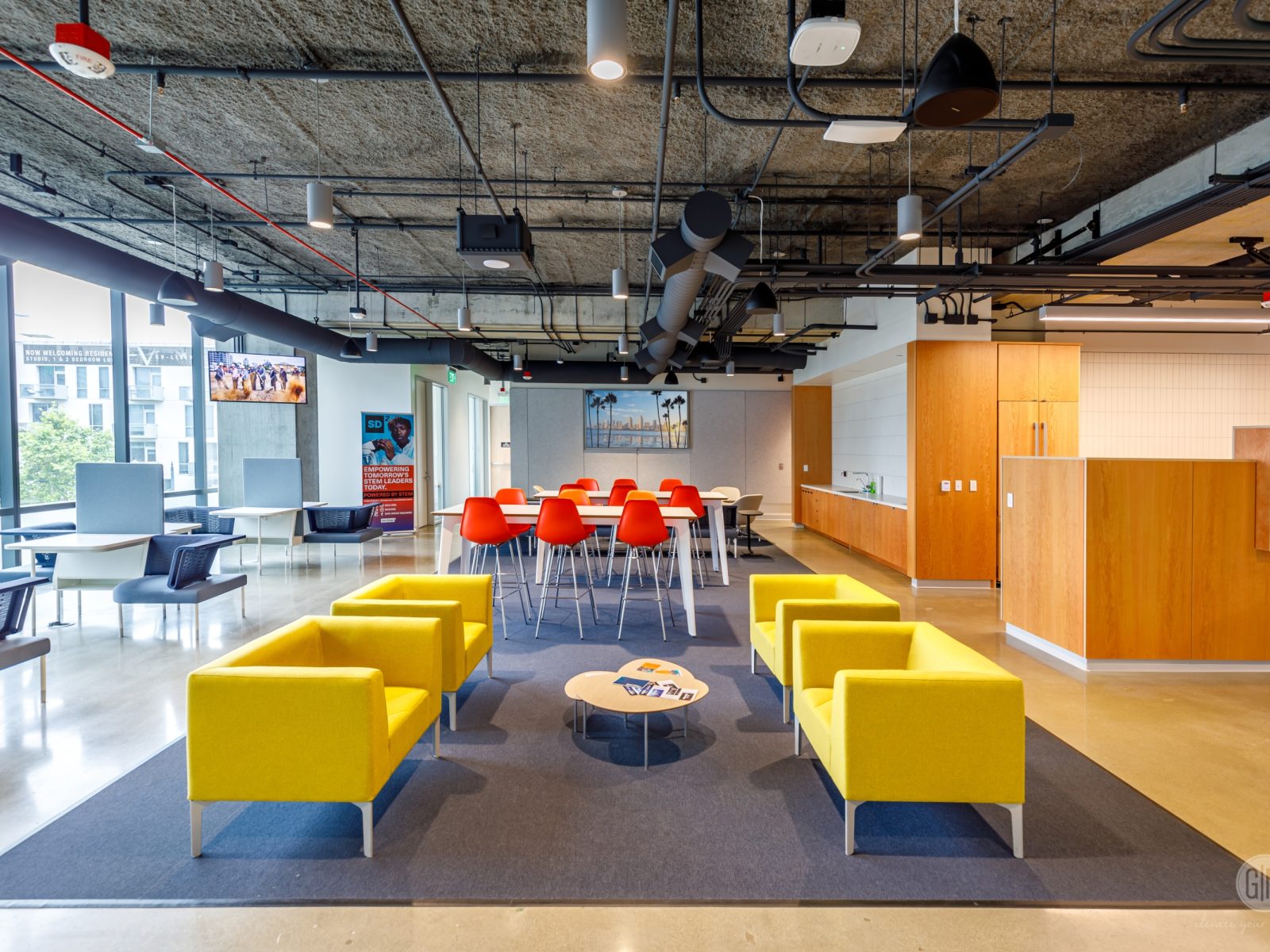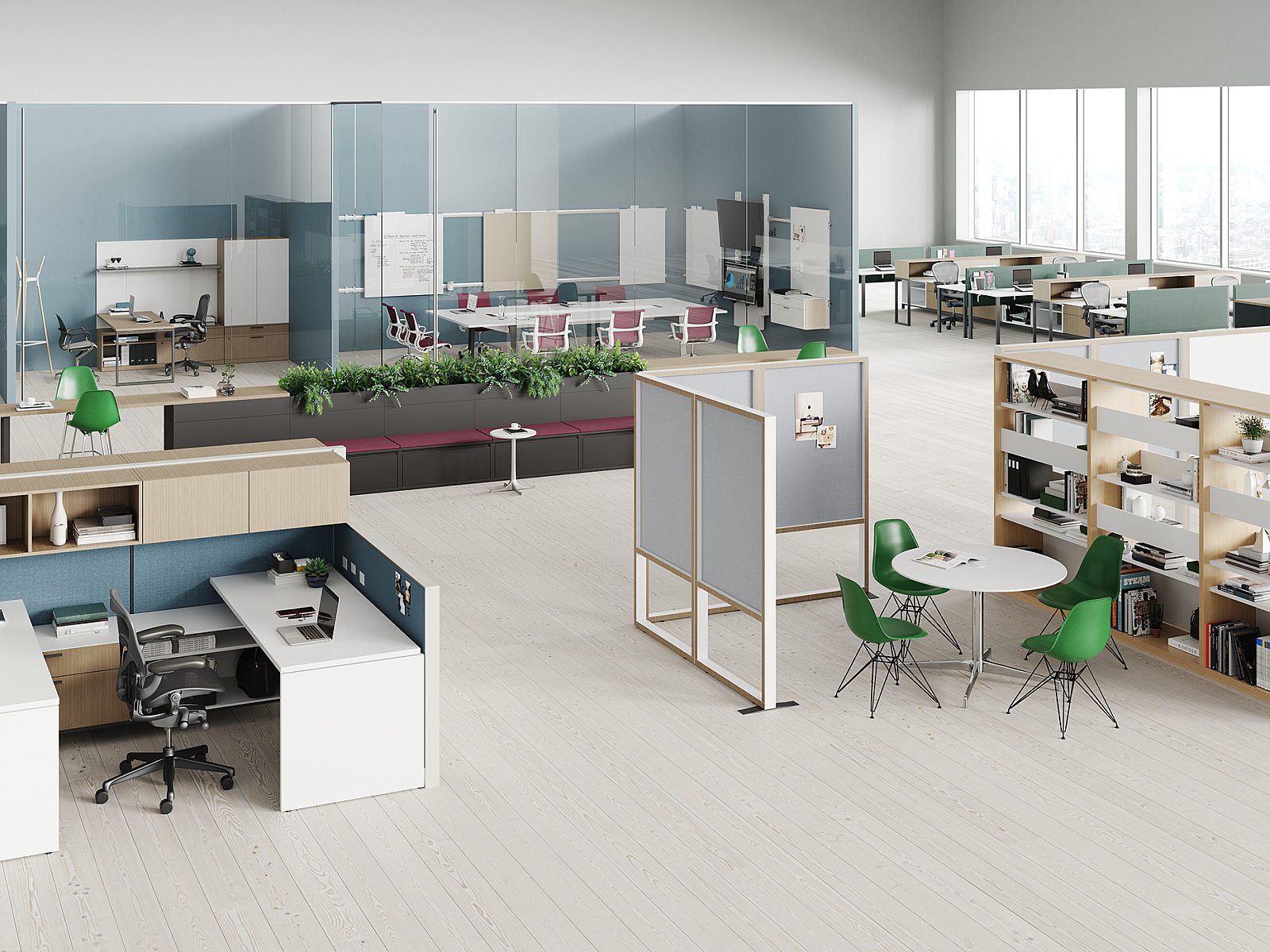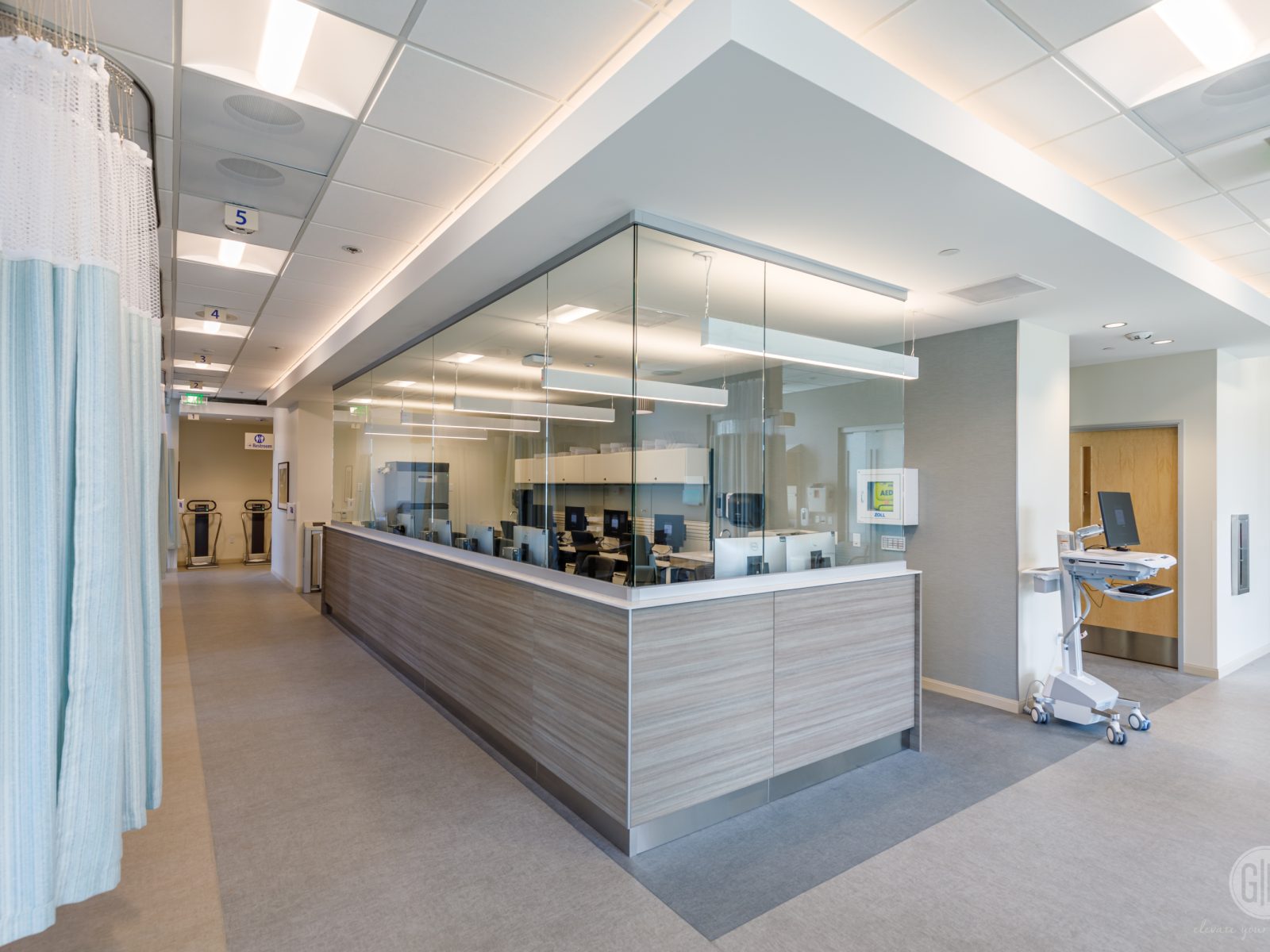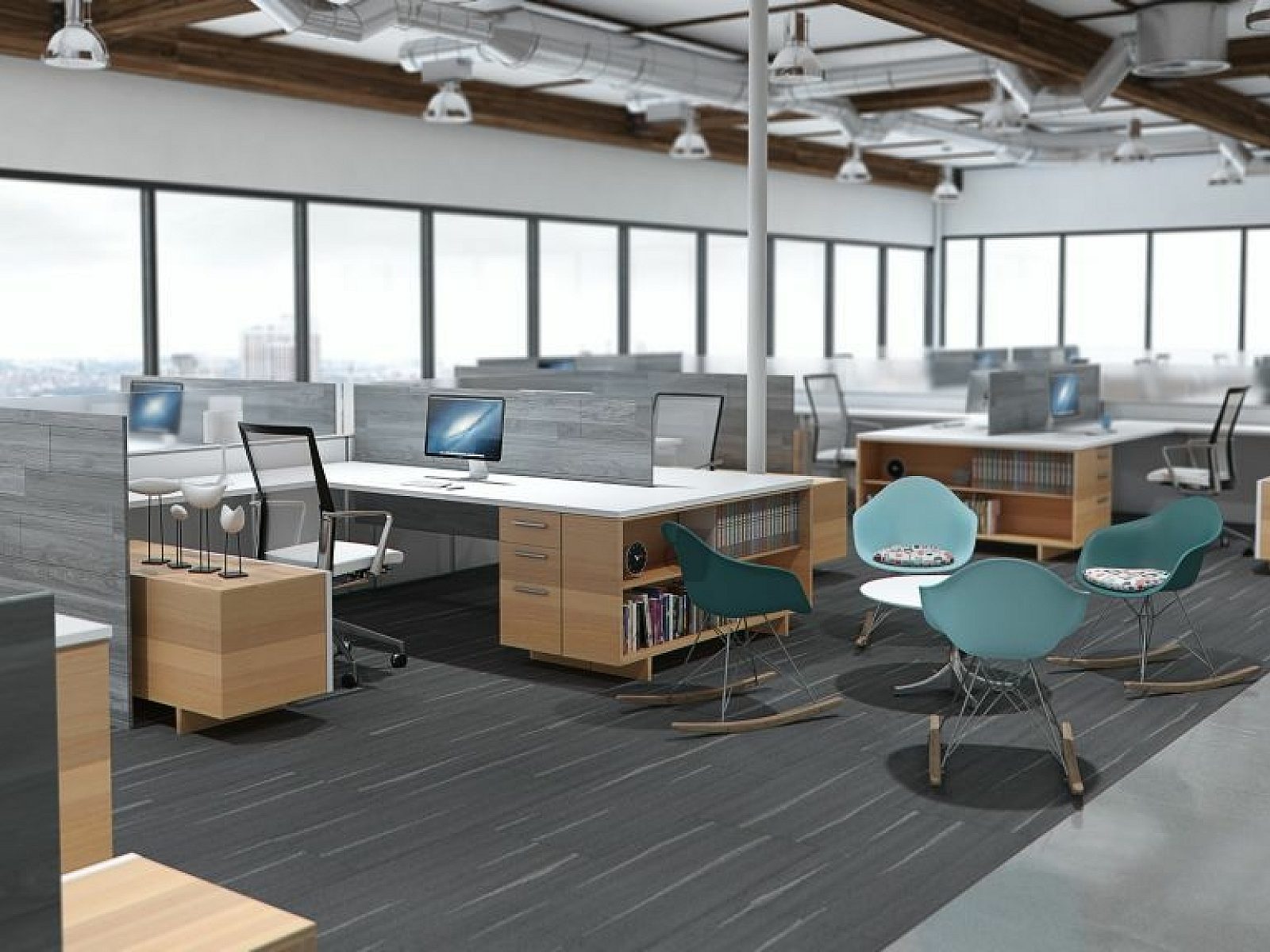The Value Of The Invisible In Workplace Design
SmithGroup's Dennis Daisey and Nancy Kohout explore the invisible elements and their value in healthy workplace design.

This article was originally published in WorkDesign Magazine.
The business of commercial real estate is obsessed with efficiency, and that’s bad for our health.
Of course, business efficiency isn’t limited to commercial real estate. From 1776, when Adam Smith published The Wealth of Nations, to the operations management theories of today, the principles of business success are well established: eliminate excess and optimize operations.
In workplace design, we call this real estate optimization which is all about identifying inefficiencies and reducing costs to maximize value. In other words, do more with less space and at lower costs. This is even embedded in the traditional dollars- and people-per-square-foot measurements of workplace effectiveness that have been used for decades.
"To avoid over-optimization, we need a greater appreciation of how design impacts us physiologically to create places that truly support well-being."
Unfortunately, these “optimizations” are often at the expense of quality, especially on the invisible aspects of workplace design such as acoustics and high-performing mechanical systems. Shortchanging these can negatively affect occupants’ health.
To avoid over-optimization, we need a greater appreciation of how design impacts us physiologically to create places that truly support well-being.
There is, of course, value in the visible features of workplace design. Considering aesthetics, variety, choice, access to daylight and views, biophilia, and more, still matters. It’s only rather recently that research, in part propelled by sustainability and wellness standards, has helped demonstrate the value and silent power of the invisible. The understanding that design can positively impact human health is increasingly clear.
"Our relationship to work has changed. We expect more from our employers and our workplaces."
The timing is also right. An unprecedented combination of a global pandemic and social justice movements have forced the workplace to evolve. While we reconsider old issues like temperature, air quality, and acoustics, new considerations have also come into play such as diversity, equity, and inclusion.
Our relationship to work has changed. We expect more from our employers and our workplaces. For example, we’ve seen when design approaches that incorporate better air quality in schools and hospitals, students learn better and patients heal faster. Why wouldn’t we expect the same from the design of our workplaces?
Temperature
The Problem
Thermal comfort is a longtime workplace complaint. It’s understandable for many reasons, but perhaps largely because the indoor climate regulations in place today were developed in the 1960s and based on the average male’s metabolic rate.
Therefore, typical office temperatures are not comfortable for all users. Traditionally this was considered preference, but we now understand clear links between temperature, gender, and performance. A 2019 study found that women perform better on certain tasks at higher temperatures, while the opposite was true for men. Interestingly, the link between men’s performance and temperature was less pronounced.
This a not just an opportunity to improve comfort and productivity for all occupants, it’s also a chance to advance diversity, equity, and inclusion through design. We can do this by better addressing inherent differences in temperature preference in a way that makes employees feel valued.
The Solution
Provide systems that offer adjustable temperatures or office layouts that allow occupants to choose a location that suits their own thermal comfort range. It’s important to have this conversation early in the design process to understand the available options and confirm the approach.
- More zone equipment and thermostats or opting for a system like underfloor air distribution (UFAD) or active chilled beams, versus traditional variable air terminal units, would allow occupants to have more adjustability.
- Design for a temperature variation across open office work areas and allow free address so that occupants can choose to sit in a location that is comfortable for them.

Air Quality
The Problem
Poor air quality has a negative impact on our mental and physical health. While not news, there’s more proof of air quality’s impact on our mental function than ever before. We’re also more conscious of the air we breathe indoors and out, thanks to the pandemic and devices that keep us up to date on key air quality indicators. Not to mention that clean air is increasingly seen as a basic human right and a social justice issue.
A 2021 study found that “increased concentrations of fine particulate matter … and lower ventilation rates … were associated with slower response times and reduced accuracy on a series of cognitive tests.” Of particular concern is that cognitive impairments are noticeable even at air quality levels found in typical indoor environments.
As for physical health, it’s been shown that natural ventilation alone can translate to a whopping 57% reduction in sick leave among workers.
The Solution
Increase the amount of outside air, consider methods of air treatment, and continually measure indoor air quality.
- Increase the amount of outdoor air to the spaces over and above the requirements of the ASHRAE 62.1 ventilation standard.
- Provide pre-occupancy flush-out with outside air.
- Increase filtration as much as the air handling systems can accommodate but ideally to a minimum of MERV 13.
- Consider other air treatments such as ultra-violet germicidal irradiation (UVGI), bipolar ionization, and local portable high efficiency particulate air (HEPA) filtration.
- Since one cannot manage what one cannot measure, measure and display levels of CO2 (carbon dioxide), PM 2.5 and PM 10 (particulates), ozone, and TVOCs (total volatile organic compounds) as indicators of air quality in the space.

Acoustics
The Problem
Spaces with poor acoustic design negatively affect our health and well-being. Unwanted sounds in our workspace are more than just nuisances we tolerate. They increase stress levels and hurt our ability to focus. Productivity, performance, and overall workplace satisfaction suffer. It’s one of the most frequent reasons for workplace complaints and the impacts are quantifiable.
Take productivity, for instance. A 2014 study found that workers lost up to 86 minutes per day from noise distractions alone. Key to understanding that lost time is how long it take us to refocus once we are distracted. A study from University of California Irvine showed that it can take up to 23 minutes to refocus after just one interruption(5).
High-quality acoustic design is also important for diversity, equity, and inclusion. Neurodiverse individuals, for example, may have increased sensitivities to sound. Poor acoustic quality can also cause issues with speech intelligibility and comprehension. This is important for day-to-day communication, especially to individuals with hearing loss and non-native English speakers.
The Solution
Designing spaces with better acoustics is addressed through a few primary measures: space planning, technical measures, and sound controlling construction.
- Space planning strategies include creating zones by function or noise level, staggering doors across corridors, and controlling the placement and sound attenuation options of noise sources, like mechanical equipment.
- Technical measures include sound-absorbing finishes, sound-masking systems, and equipment specifications.
- Sound controlling measures include wall construction details, such as sealants and insulation, especially at penetrations, and door and door hardware specifications. It’s rare that one measure is enough; acoustic design must consider all factors and the relationship between them.
The Future of Health and Well-being is in Our Hands
Health experts have long contended that built environments can have positive and negative effects on an individual’s physical health. Only in recent years have we–as occupants and designers, alike–truly come to understand the real impact that these spaces have on our bodies and minds.
The invisible elements touched upon here represent but a fraction of the many factors that can, and should be, considered when designing a workplace.
Writer Jonathan Swift once mused, “Vision is the art of seeing what is invisible to others.”
What will you choose to see as you embrace your next project?



